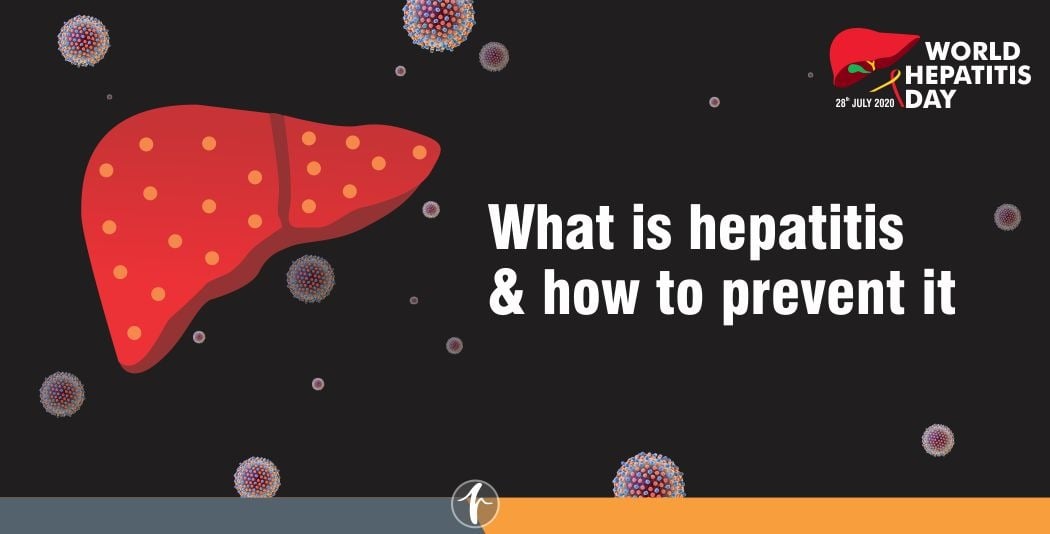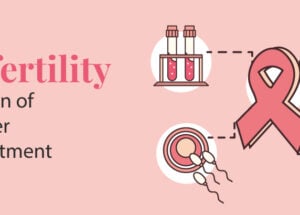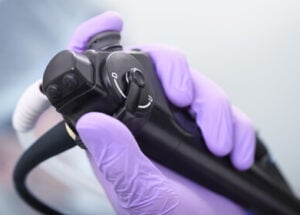Neurological Surgery
June 24, 2020

Neurological Surgery is a discipline of medicine and that specialty of surgery that provides the operative and nonoperative management (i.e., critical care, prevention, diagnosis, evaluation, treatment, and rehabilitation) of disorders of the central, peripheral, and autonomic nervous systems, including their supporting structures and vascular supply; the evaluation and treatment of pathological processes which modify the function or activity of the nervous system, including the hypophysis; and the operative and nonoperative management of pain. As such, neurological surgery encompasses treatment of adult and pediatric patients with disorders of the nervous system: disorders of the brain, meninges, and skull, and their blood supply, including the extracranial carotid and vertebral arteries; disorders of the pituitary gland, disorders of the spinal cord, and vertebral column, including those which may require treatment by spinal fusion or instrumentation; and disorders of the cranial and spinal nerves throughout their distribution.
Carotid artery disease
Most strokes happen because of a blockage in an artery. A common cause of this is disease in the large carotid arteries in the front of your neck. This factsheet explains how carotid artery disease develops, how it is diagnosed and how it may be treated.
- What is a stroke?
A stroke is a brain attack which happens when the blood supply to the brain is cut off. A transient ischaemic attack (TIA) is like a stroke but the symptoms disappear within 24 hours. A TIA is sometimes a warning sign that a stroke may follow. Around 20 per cent of all strokes are caused by carotid artery disease. This is more common in older people who have a stroke.
- What is carotid artery disease?
At the front of your neck are two large blood vessels, called the carotid arteries, which carry the majority of your blood supply to your brain. There are another two large arteries that run alongside your spine and up the back of your neck called the vertebral arteries. These four arteries join together in a rough, circular shape called the circle of Willis. From here, your arteries separate into smaller arteries, and then smaller arteries still. Blood travels along these arteries until it reaches all parts of your brain Carotid artery disease is the name for the narrowing of one or both of the carotid arteries. The medical term for the narrowing of an artery is stenosis. When we are young our arteries are wide and flexible, but as we get older our artery walls become thicker and less flexible. A harmful build-up of fatty deposits (yellow patches called ‘atheroma’ or ‘plaque’) can develop on the inside walls of our arteries. Over time, these arteries can become more and more ‘furred up’ with plaque, reducing the blood flow through them. The medical term used to describe the hardening and thickening of the large arteries within our bodies is atherosclerosis
- Why does carotid artery disease develop?
We all develop some narrowing in our arteries, including our carotid arteries, especially as we get older. However, for some people this is more severe than others. Being male, of an older age, and having a family history of stroke or angina are some of the risk factors for carotid artery disease. While there is nothing that can be done to change these, other risk factors can be controlled. They include:
• high cholesterol
• high blood pressure
• diabetes
• smoking
• lack of exercise
• being overweight.
- How can carotid artery disease cause a stroke or TIA?
1. Total occlusion
This is the medical term for when plaque narrows and completely blocks a carotid artery, cutting off the blood supply to the brain and causing a stroke. If one of your carotid arteries becomes narrow or blocked, the circle of Willis may compensate, allowing blood from other arteries to supply enough blood to all parts of your brain. However, the circle of Willis is only intact in about 35 to 50 per cent of people. For the rest of the population the circle of Willis does not form a true circle and cannot compensate.
2. Thrombosis
As well as making our arteries narrower, atherosclerosis can make the inner surface of our artery walls fragile and likely to break up. Where this happens, the lining of the artery becomes exposed and blood begins to clot over it. The clot that forms here can then cause a blockage in the artery, cutting off the blood supply at this point. This clot is called a thrombosis.
3. Embolism
A blockage in your blood vessel, caused by something that has travelled in your bloodstream from elsewhere in the body, is known as an embolism. It is possible for a clot to form, then break away and travel in your bloodstream causing a blockage somewhere else. In the arteries in your neck, blockages tend to happen at points where the arteries branch into two smaller arteries. It is also possible for a piece of plaque to break away and travel in your bloodstream, causing a blockage somewhere else. This is most likely to happen with a plaque that is unstable (one with a thin crust with a large amount of soft, fatty deposit underneath). More research is needed to find out why unstable plaques develop and how best we can prevent and treat them.
- How is carotid artery disease diagnosed?
Carotid artery disease is usually diagnosed when you have the symptoms of a TIA or a stroke. Occasionally, a doctor might discover that you have some narrowing if you are having tests on these arteries for another health reason. Your doctor may listen to the sound of your blood flow through your carotid arteries using a stethoscope. If it sounds unusual it might indicate that there is some narrowing. You will then be referred to a hospital specialist for further tests.
The main test is called an ultrasound (or a Carotid Doppler). It is a completely painless procedure. A small probe is passed over the side of your neck to build up a picture of your arteries. The specialist can then see whether there is any narrowing and, if so, whether it is severe enough to benefit from having an operation.
You will probably have further tests to confirm this diagnosis. These may involve having a special dye injected into your arteries. This is called angiography or arteriography and makes your arteries visible when scanned, for example, by x-ray. This has two categories of measurement which are:
• moderate – less than 69 per cent blocked
• severe – 70 to 99 per cent blocked.
- How can it be treated?
There are procedures that can be done to reduce the risk of a further stroke or TIA, but they will only be offered to you if your artery has severe stenosis. This is because the procedures themselves carry risks. The main procedure is an operation called carotid endarterectomy. For arteries with moderate stenosis the risks of the operation are considered too high. These arteries can still supply your brain with enough blood. If your artery is completely blocked there remains a small risk of stroke;
however, there is no procedure that can unblock this.
Carotid endarterectomy
Carotid endarterectomy is an operation to clear the blockages from inside an artery. It is well-established and is the main procedure used. To make sure that you are well enough to have this operation you will have some additional tests. These will probably include:
• blood tests
• a breathing test
• an electrocardiogram, to check your heart rhythm
• an echocardiogram (an ultrasound test of your heart to check it is working properly). If you smoke you will be advised to stop smoking as soon as possible before the operation. Smoking reduces the amount of oxygen in your blood and can increase your risk of breathing problems during the procedure. Stopping altogether is best, but cutting down will also help. Ideally, surgery should be carried out within two weeks of your symptoms of stroke or TIA although at present, the average time it takes to receive an operation is around three weeks.
Carotid endarterectomy may be carried out under local or general anaesthetic in an operation that takes one to two hours. If both of your carotid arteries need surgery, this is usually done in two separate operations.
A tube called a catheter might need to be fitted to drain urine from your bladder. You will also be connected to a drip to make sure you get enough fluids during and after surgery and your blood pressure will be carefully monitored.
The surgeon will make a small incision (cut) in the side of your neck so they can see your carotid artery, which will then be clamped shut. If need be, a small piece of tubing will be used to re-route blood flow along another artery – this is to make sure your brain still gets enough blood.
The surgeon will then open up your artery and remove the inner lining along with any debris. It is likely that a graft will then be sewn onto your artery to widen it – most surgeons believe this lowers the risk of a repeat stroke. A graft is a piece of tissue that may be taken from a vein in your thigh, or it may be man-made.
When the surgeon is ready, your artery will be stitched up, the blood supply restored, and the small cut in your neck sewn up. Although this sounds like a very dramatic operation, most people recover remarkably quickly. Within a few hours you can usually sit up in bed, and are able to go home in a couple of days.
The wound in your neck should heal to a fine scar after a few months. You may be advised to limit your physical activity for a short period. Most people can return to work after four to eight weeks but extra care needs to be taken in jobs that involve manual labour. Where possible, light duties should be performed until you fully recover. You will be able to return to driving two to three weeks following your operation,providing that you can perform an emergency stop safely and look over your
shoulder. If you have had a stroke you may have some long-term effects that make returning to work or driving more difficult. Your care provider will be able to advise you further.
- What are the risks?
For most people there will be no complications, but as with any operation, there are some risks associated with carotid endarterectomy.
There is a five per cent risk of having a stroke during surgery. The risk of this happening is usually due to a small blood clot, or other debris, breaking free during the operation and travelling to your brain.
Therefore, carotid endarterectomy is only recommended if you have severe stenosis, where the risk of having another stroke without the operation is greater than the risk associated with the procedure. There is also a risk of death affecting just one per cent of people. Complications are more likely if you have had a recent, serious stroke, if you have a blockage in your other carotid artery, if you have other health conditions (such as heart disease), if you are an older adult, and if you’re a smoker. Other complications can include:
• wound infection
• bleeding from the site of your wound
• nerve injury, which affects around eight per cent of people and is usually temporary. This can cause a hoarse voice, weakness, or numbness on one side of your face (these symptoms usually disappear within a month)
• numbness or slight pain around your wound (this is normal and will go away with time)
• chest infection – which may require antibiotics.
As with any major operation these risks should be explained to you. It is normal to feel anxious or frightened by this so why not talk to your surgeon and anaesthetist about your concerns? It is a good idea to prepare for an appointment with these specialists by writing down a list of questions in advance. You may like to consider the following:
1. What is the success rate for this operation at this hospital?
2. What is my risk of a stroke without the operation?
3. Am I at an increased risk during this operation because of other health conditions?
4. Can I choose to have a local or a general anaesthetic?
5. Is it likely that I will have to have this operation again in the future?
6. Do you have a diagram to help explain the operation?
You could also take a pen and paper with you so you can write down what the specialists tell you and can discuss it later with friends or family. Although it is good to take some time to think about the operation, the longer you wait, the greater your risk of having another stroke, therefore it is good to try to strike a balance – do some research, but do it promptly.
- What are the alternatives?
There is an alternative to the carotid endarterectomy procedure that is called carotid artery stent placement (commonly known as stenting). This procedure is said to be less invasive than the endarterectomy because it does not involve open surgery of the neck. The evidence shows that this procedure is safe and effective for the short term, and it is currently being monitored in clinical trials to compare its effectiveness with carotid endarterectomy in the longer term. With carotid stenting, local anaesthetic is used. A small flexible tube is passed into the carotid artery through the femoral artery in your groin. This is done under the guidance of an x-ray of your arteries, and an x-ray dye (contrast) will be injected into the tube. The tube has a small balloon at the end of it. When this tube reaches the narrowed area, the balloon is inflated up to around 5mm. A small wire mesh cylinder called a stent is then inserted to keep your artery open, improving blood flow. The stent will stay there permanently. This widens your artery, allowing your blood to flow through it again. The balloon is then removed. After the operation you will need to lie flat and still for an hour or so afterwards to prevent bleeding from the artery. You will stay in hospital overnight and go home the following day.
- What are the risks?
As with carotid endarterectomy,complications can occur after stenting and the risk of having another stroke and death are similar. Therefore, as with endarterectomy, it will also only be recommended if you have severe stenosis. Other rare complications of this procedure include:
• bruising where the tube enters your femoral artery
• bleeding from this point, which may require an operation (this only happens in one per cent of all cases)
• an allergic reaction to the x-ray contrast
• kidney function problems caused by the x-ray contrast
• a blockage or rupture in your carotid artery – this can sometimes be treated with a stent. If this isn’t possible, an operation may be needed to repair your artery.
The overall risk that you will need an operation because of any kind of complication is one or two per cent. The advantage of stenting is that it is less invasive and it avoids wound complications. However, research suggests that it is more likely that the arteries will become narrowed again (re-stenosis) than after endarterectomy. If you are offered stenting as part of a clinical trial you are free to accept or decline as you choose. Make sure you understand what will be involved before making your decision. As with carotid endarterectomy, speak to your consultant about your options and ask lots of questions until you are happy. One question you may want to ask, in addition to those already suggested, is why you are being offered stenting rather than endarterectomy. There are several possible answers to this question, and they may include the experience of the medical staff or how long ago your stroke or TIA was.
- Are there any other options?
If you choose not to have an operation, or if you are unsuitable for an operation, there is nothing that can be done to reduce the narrowing in your arteries. However, you will be given medicine and lifestyle advice to help to reduce your risk of a further stroke or TIA. This will also be the case if you do have an operation.
Some of the common medicines available are:
• blood thinning medicines which make clots less likely to form (for example, clopidogrel and aspirin)
• medicines that lower your blood pressure
• medicines that lower your cholesterol (for example, statins).
It is quite likely that you will need a combination, or even all of these medicines.
- How can I reduce my risk of stroke or TIA?
If you have a carotid endarterectomy following your stroke or TIA, your chances of having a repeat stroke over the following three years are reduced by thirty per cent. The figures for stenting are similar. If you have carotid artery disease, it is particularly important to maintain a healthy lifestyle, as this will help to reduce the risk of your arteries becoming blocked up again, and will reduce the risk of a further stroke or TIA. Here are some ideas to help you lower your risk:
1. Stop smoking – seek help with this if necessary.
2. Attend all of your follow up appointments – you should receive follow up appointments for 6 weeks and four years after the operation.
3. Follow your after-care advice (if any).
4. Take your medicine correctly.
5. Check your medicine is working for you (your GP can help you to find out).
6. Tell your GP about any health problems you are experiencing. Never ignore problems – they may be a sign of something more serious.
7. Reduce the amount of alcohol you drink and avoid binge drinking.
8. Eat a healthy diet – we can help you get started with our factsheet F8, Healthy eating and stroke.
9. Exercise regularly.
10. If you need to, try to lose weight. You can ask your GP for help making lifestyle changes.
The Stroke Association has a number of factsheets on reducing the risk of stroke. Please contact us if you would like more information.
Disclaimer: The Stroke Association provides the details of other organisations for information only. Inclusion in this factsheet does not constitute a recommendation or endorsement.
Glossary of terms
Angiography = picture of the blood vessels using a special dye
Arteriography = picture of the blood vessels using a special dye
Atherosclerosis = hardening and thickening of the large arteries caused by plaque
Carotid arteries = two large arteries that provide the main blood supply to the head and neck
Circle of Willis = the joining of several arteries leading to the brain that form a roughly circular shape
Echocardiogram = ultrasound test that gives a picture of the heart
Electrocardiogram = test that gives information about the electrical activity of the heart
Endarterectomy = surgery to remove the lining of an artery
Plaque = fats and/or calcium deposits stuck to the lining of an artery
Stenosis = narrowing of an artery
Stenting = use of a device to keep a blood vessel open
TIA = transient ischaemic attack (stroke-like symptoms that disappear within twenty four hours)
Vertebral arteries = two large arteries at the back of the neck that supply blood to the brain






